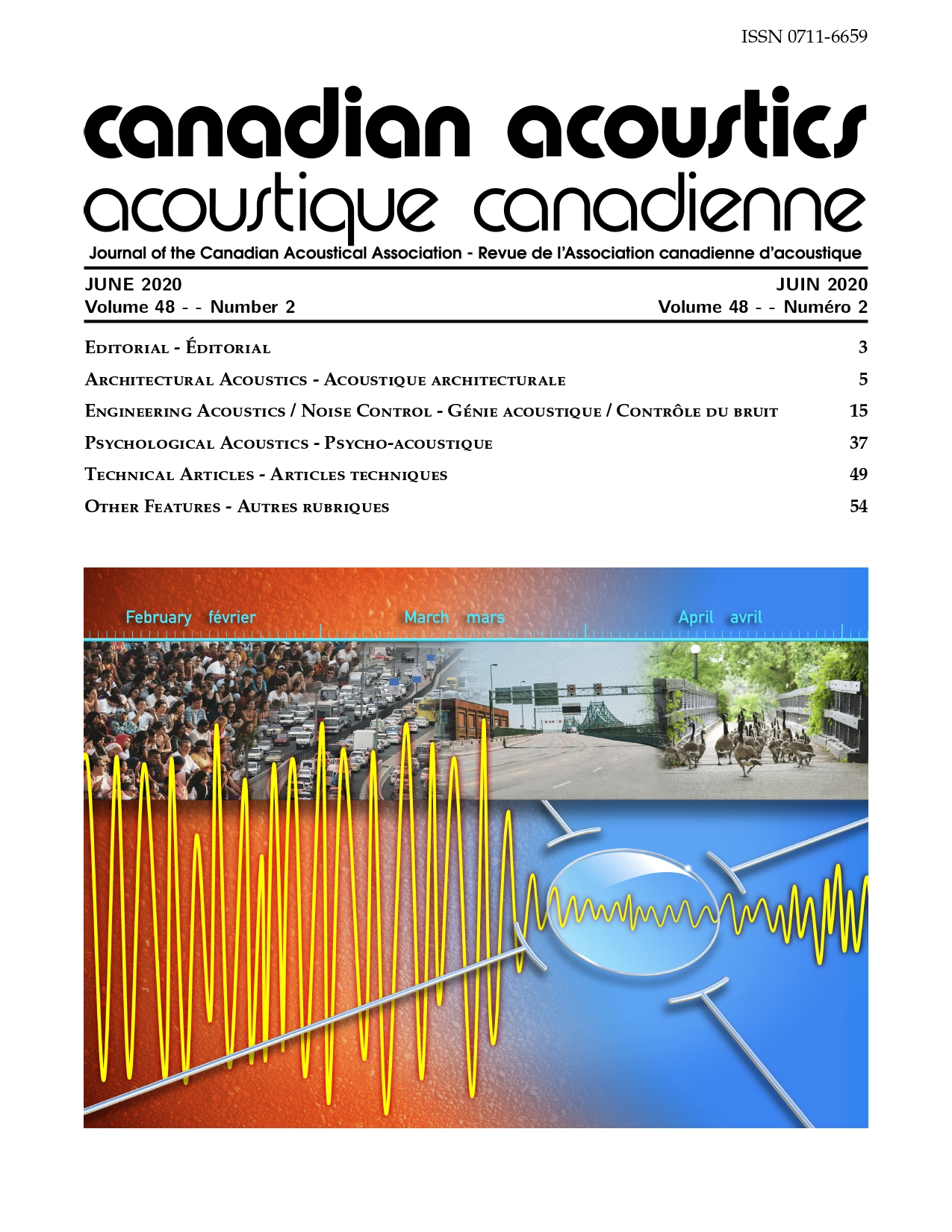Neighbourhood Context and Composition Moderate the Noise Annoyance Dose-Response
Keywords:
Soundscape, environmental noise, noise perception, noise annoyance, noise sensitivity, quality of lifeAbstract
Growing urban populations, conflicting land uses, and more traffic are exaggerating noise pollution in urban areas. Toronto is one of the cities facing challenges in tackling environmental noise. The significance of this research is based on a relative absence of literature on how noise sensitivity and annoyance are affected by non-acoustic factors, such as the built environment, demographic, and socio-economic factors. Data from a neighbourhood noise survey (n=552) in 2017 was combined with spatial data on the built environment and predicted noise exposures. Bivariate analysis and multivariate regression showed that socioeconomic and physical environment factors influence the noise annoyance responses. Specifically, residents in a neighborhood with high socioeconomic status and access to green space, and low night time noise levels, were more than twice as likely (Odds Ratio:2.35; p<0.001) to report high annoyance when evaluating the neighbourhood soundscape relative to residents of neighbourhoods with moderate socio-economic status and lower access to green space. Although nighttime noise levels appeared to be a strong predictor of neighbourhood differences in noise annoyance at home and in the neighbourhood, the findings demonstrate that noise perceptions are determined in part by neighbourhood contexts such as environmental quality and individual characteristics. For future research on noise perception the results warrant explicit consideration of shared neighbourhood perceptions of noise and environmental expectations.
Additional Files
Published
How to Cite
Issue
Section
License
Author Licensing Addendum
This Licensing Addendum ("Addendum") is entered into between the undersigned Author(s) and Canadian Acoustics journal published by the Canadian Acoustical Association (hereinafter referred to as the "Publisher"). The Author(s) and the Publisher agree as follows:
-
Retained Rights: The Author(s) retain(s) the following rights:
- The right to reproduce, distribute, and publicly display the Work on the Author's personal website or the website of the Author's institution.
- The right to use the Work in the Author's teaching activities and presentations.
- The right to include the Work in a compilation for the Author's personal use, not for sale.
-
Grant of License: The Author(s) grant(s) to the Publisher a worldwide exclusive license to publish, reproduce, distribute, and display the Work in Canadian Acoustics and any other formats and media deemed appropriate by the Publisher.
-
Attribution: The Publisher agrees to include proper attribution to the Author(s) in all publications and reproductions of the Work.
-
No Conflict: This Addendum is intended to be in harmony with, and not in conflict with, the terms and conditions of the original agreement entered into between the Author(s) and the Publisher.
-
Copyright Clause: Copyright on articles is held by the Author(s). The corresponding Author has the right to grant on behalf of all Authors and does grant on behalf of all Authors, a worldwide exclusive license to the Publisher and its licensees in perpetuity, in all forms, formats, and media (whether known now or created in the future), including but not limited to the rights to publish, reproduce, distribute, display, store, translate, create adaptations, reprints, include within collections, and create summaries, extracts, and/or abstracts of the Contribution.


